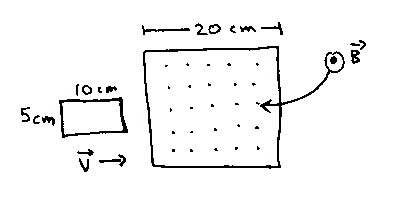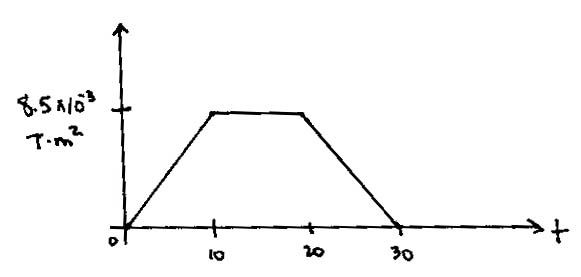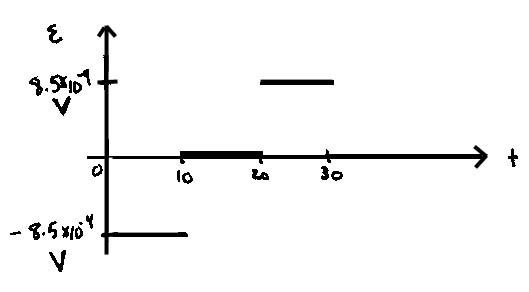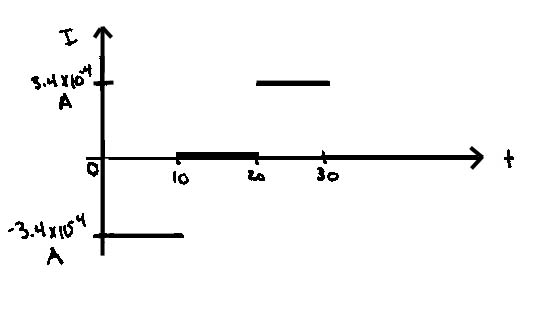a) Find and graph the magnetic flux as a function of time for 0<t<30.
b) Find and graph the induced emf as a function of time for 0<t<30.
c) Find and graph the current in the loop as a function of time for 0<t<30.
2.) (15 points) A 10 cm by 5 cm loop of wire with
resistance of ![]() is pulled through a region of uniform
magnetic field B = 1.7 T out of the page,
with a constant speed
is pulled through a region of uniform
magnetic field B = 1.7 T out of the page,
with a constant speed ![]() . The B field is normal to the
loop. The front end of the loop enters the region of magnetic field
at time t = 0. The region of B field is 20 cm wide. Neglect
any effects of self inductance and therefore don't worry about the
fact that your graph has sharp ``edges''.
. The B field is normal to the
loop. The front end of the loop enters the region of magnetic field
at time t = 0. The region of B field is 20 cm wide. Neglect
any effects of self inductance and therefore don't worry about the
fact that your graph has sharp ``edges''.
a) Find and graph the magnetic flux as a function of time for
0<t<30.
b) Find and graph the induced emf as a function of time for 0<t<30.
c) Find and graph the current in the loop as a function of time for
0<t<30.

Answer:
a)
Since the area that is in the field is changing, the flux is changing
as well. Note that initially and at t>30, the flus is zero. Also
that for time 10<t<20, the entire loop is in the B field and
therefore the flux is constant. The equations determinig the flux
are given by
![]()
![]()
For 0<t<10, we have
![]()
![]()
For 10<t<20, we have
![]()
and for 20<t<30, we have
![]()
That gives us this graph.

b)
To find the emf, we simply make use of the equation,
![]()
So, our graph of the emf whould be the derivative of the graph of the
flux. Equation wise we have zero emf when the flux isn't changing and
therefore, for the time 10<t<20, we know that ![]()
For 0<t<10, we have
![]()
and for 20<t<30, we have
![]()
The graph looks like

c)
We simply use Ohm's law to find the current in the circuit. That
gives us
![]()
